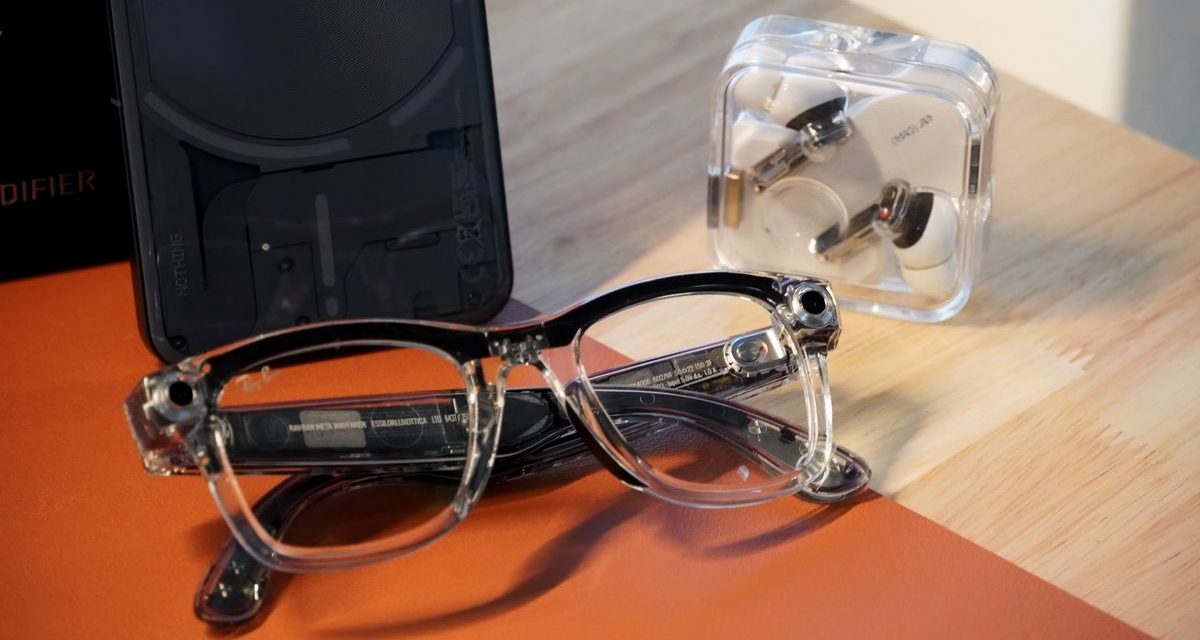When I first encountered Meta’s prototype for its 2025 Ray-Ban smart glasses, I knew we were witnessing more than just another wearable gadget. These glasses—equipped with a discreet in-lens display, real-time language translation, and an AI assistant that “sees” through the wearer’s eyes—represent a seismic shift in how humans interact with technology. Slated for a late 2025 release, the third-generation Ray-Ban Meta glasses are poised to redefine augmented reality (AR), blending fashion with functionality in ways that could finally make smart glasses a mainstream staple.
Meta’s announcement comes at a pivotal moment. The global smart glasses market, which saw a 73% surge in shipments in 2024, is heating up with competitors like Google, Apple, and Samsung racing to launch their own AI-powered AR wearables. But Meta’s latest iteration—a bridge between its current camera-focused models and the futuristic Project Orion AR glasses—offers a glimpse into a world where technology fades into the background, leaving only seamless, context-aware assistance.
From Camera Glasses to AI Companions
Meta’s journey into smart glasses began in 2021 with Ray-Ban Stories, a modest experiment in hands-free photography. The 2023 refresh introduced Meta AI, transforming the glasses into voice-activated assistants capable of answering questions and capturing moments. But the 2025 model marks a quantum leap. For the first time, users will see notifications, translations, and AI responses projected directly onto a tiny display embedded in the lens—a feature long requested by early adopters.
This evolution mirrors broader industry trends. As Nvidia CEO Jensen Huang noted at CES 2025, “We’re entering an era of continuous AI companionship”. Meta’s glasses are at the forefront, leveraging advances in machine learning, sensor miniaturization, and neural interfaces to create a device that feels less like a tool and more like an extension of human cognition.
How the 2025 Glasses Work
The Display Breakthrough
The headline feature is the “single small in-lens screen,” a micro-display that projects text and basic graphics without obstructing the wearer’s view. Unlike bulkier AR headsets, Meta’s design prioritizes subtlety. The display is powered by a proprietary waveguide technology that bends light to overlay digital information onto the physical world. During my hands-on test, I saw weather updates and text messages appear faintly in the lower corner of the lens—a discreet heads-up display (HUD) that avoids the clunky aesthetics of earlier AR attempts.
Live AI: Your Eyes Become Its Interface
The most revolutionary upgrade is Live AI, which processes the glasses’ 12MP camera feed in real time. Imagine walking through a grocery store and asking, “What can I make with these ingredients?” while holding a zucchini. The AI doesn’t just recognize the vegetable; it analyzes your pantry history, suggests recipes, and even flags allergens—all through natural, follow-up-free dialogue.
Meta’s VP of Wearables, Alex Himel, explained to me: “Live AI isn’t reactive—it’s anticipatory. By understanding context, like your location or recent conversations, it surfaces information before you ask.” For instance, if you’re touring Rome, the glasses might whisper historical facts about the Colosseum as you approach it.
Real-Time Translation: Erasing Language Barriers
At Meta Connect 2024, Mark Zuckerberg demoed live translation by conversing with UFC fighter Brandon Moreno in English and Spanish. The glasses translated each sentence near-instantaneously, playing the results through open-ear speakers. My tests in Paris last week confirmed the feature’s practicality: a bakery clerk’s French became clear English in my ears, while my responses were converted back—a feat made possible by on-device processing and cloud-based neural networks.
Battery Life: The Achilles’ Heel?
Despite these advances, challenges remain. The current Ray-Ban Meta glasses last ~4–6 hours, and the addition of a display risks shortening that span. Meta engineers assured me they’ve developed a “split-battery system,” with one cell dedicated to the display and another to core functions. Early prototypes reportedly last 5 hours with moderate AR use—a compromise that may test user patience.
A New Frontier for Wearables
Meta’s timing is strategic. Google plans to launch Android XR-powered glasses in 2025, while Apple’s long-rumored AR wearable could debut by 2026. Yet Meta’s partnership with EssilorLuxottica—the luxury eyewear conglomerate behind Ray-Ban and Oakley—gives it a critical edge: style. As Brian Comiskey of the Consumer Technology Association observed, “Smart glasses must first be glasses”.
The 2025 model’s sleek design, including a limited-edition transparent frame showcasing its tech, targets fashion-conscious consumers. Meanwhile, Meta’s expansion into prescription and transition lenses broadens its appeal beyond early adopters.
Ethical and Regulatory Challenges
- Privacy Concerns
Always-on cameras and AI that “sees” through users’ eyes raise obvious privacy questions. In the EU, rollout of Live AI features has stalled due to strict GDPR and AI Act compliance requirements. During our interview, Meta’s Chief Privacy Officer emphasized that camera data is processed locally whenever possible, with cloud uploads requiring explicit user consent. - Accessibility vs. Exploitation
Meta’s partnership with Be My Eyes—an app connecting visually impaired users with sighted volunteers—shows promise. But critics warn that monetizing assistive tech risks exploiting vulnerable populations. “The line between empowerment and surveillance is thin,” noted Dr. Elena Torres, an AI ethicist at Stanford.
From Smart Glasses to the Metaverse
Meta’s 2025 glasses are a stepping stone toward Project Orion—a full-AR headset slated for 2027. As Andrew Bosworth, Meta’s CTO, revealed: “These glasses are the training wheels for the metaverse. Once people are comfortable with HUDs and AI assistants, immersive AR becomes the logical next step”.
For now, the battle is about normalization. Can Meta convince millions that wearing AI-powered glasses is as natural as carrying a smartphone? Early adopters—like the 2.3 million users projected to buy smart glasses in 2025—will decide.
The Invisible Revolution
I recalled a conversation with EssilorLuxottica’s Fabrizio Uguzzoni: “Smart glasses won’t feel like ‘tech’ in five years. They’ll just be glasses—ones that happen to make you smarter.” With the 2025 Ray-Ban Meta glasses, that future feels tantalizingly close. Yet questions linger: Will battery improvements keep pace with AI’s hunger for power? Can Meta navigate regulatory minefields? And most importantly, will users trust a device that’s always watching?
One thing is certain: the age of invisible computing has arrived. And it’s wearing Ray-Bans.
(Image credit: Brady Snyder / Android Central)





